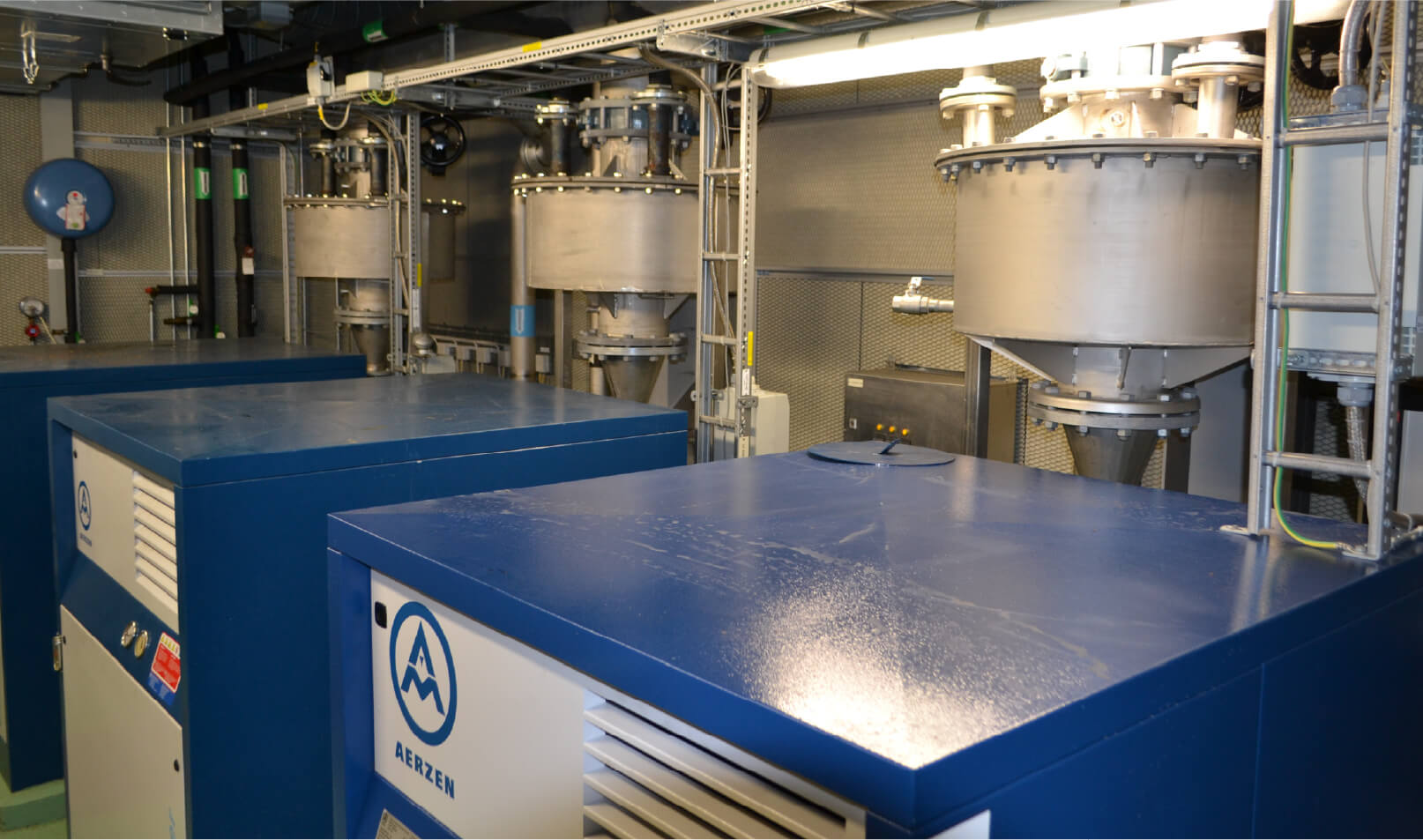Maximizing Thermal
and Energy
Recovery
Maximizing Thermal
and Energy
Recovery
OVERVIEW
OVERVIEW
Air/Water Heat Exchange System
The VLV Air/Water Heat Exchanger was developed to extend the service life of the membranes used in aeration tanks. Among other various applications, the unit also recovers energy from the blower-produced air stream that is used for the heating of ventilation air or tap water.
Compressed air flows into the heat exchanger axially via the inlet pipe. After being pressed against a wall at the far end of the heat exchanger, the air flows freely between a number of layers of surface-maximizing copper loops in which the cooling agent circulates concentrically. The air is directed past the wall of the heat exchanger and then onwards to the outlet. This generates effective temperature reduction of air passing through aeration membranes.
The flanged axial inlet and outlet make installation easier in both new and existing plants. Additionally, the flanged casing facilitates easier inspection and maintenance. As standard, VLV units are manufactured in 304 stainless steel with copper cooling tubes.
PRODUCTS
PRODUCTS
PRODUCTS
PRODUCT
PRODUCT


Features and Benefits
Effective temperature reduction and energy recovery of air.
Extends service life of membranes, thereby reducing maintenance costs.
- Reduces pressure loss and eliminates sensitivity to clogging on the airside.
- The unit has a small footprint and is easy to install.






